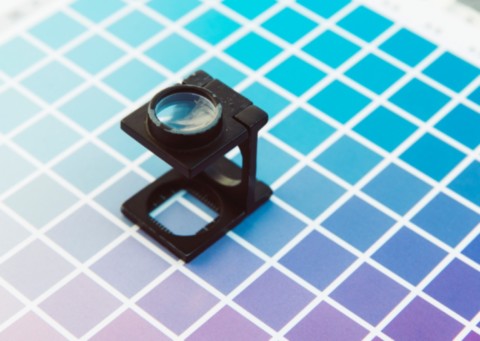PRINT PROCESS
Introduction.
Coming from the dinosaur era of press reproduction, things are somewhat different to how they used to be done.
Artwork would take days, repro would take days, platemaking took days, set-up and make readies took hours. Then print began.
Back in the ‘good old days’ of CS10 artwork, spray mount, overlays, tint laying, ruby-lith and cromalins and sending the artwork by van or bike to get approval.
Praying there weren’t amends that would result in many more hours work to update the artwork.
This was pre-press of the 80’s and early 90’s. Jobs and Wozniak were still developing the future, so the reliance was on the Berthold M Series and Linotype glass grid systems.
Laborious, painstaking, time-consuming, all done by hand, this was how it was done.
Enter Steve Jobs back into Apple in 1998 and soon the Apple Macintosh, now regarded as the forefront of the graphics industry, would hit the market. It wouldn’t be until the days of the IMAC that the full potential would be realised.
Days turned to hours, hours to minutes and suddenly the whole industry was more open and accessible.
The ‘tools of the trade’ changed dramatically, toxic powders, glues and adhesives replaced by RGB colours on monitors.
The industry literally cleansed up its act.
Technological advances were to create an ever-shrinking world, no longer did couriers have to deliver proofs – the fax machine was also to fulfil a place in the digital revolution.
Leading to online proofing, the introduction of ISO standards and the eradication of hard copies would be the final step in the chain, allowing accelerated workflows.
Digital presses and the continuing progression of them have also created new options, new possibilities………
The Common Two
There are many ways of getting ink on the paper. Lithography, Digital, Gravure, Screen Printing to name but a few.
Now isn’t the time to go into them all in detail – instead I will concentrate on the 2 most common (depending on your industry) – Litho and Digital.
There are many pages for you to look up how the process works, but to simplify – litho would be used for large scale print jobs, digital for smaller more specific needs.
Litho (web offset and sheet offset) works on the principal that oil and water don’t mix.
Plates are made for each of the colours in the job (CMYK) and loaded onto the press. Sheet fed presses sending a sheet at a time, Web fed presses feeding the press off a roll of paper.
The presses operate at great speed and with a B1 press for example capable of producing a booklet in one pass and thousands of sheets per hour.
Digital presses come in many different formats – from A4 copiers up to large format printers capable of printing 5m widths.
All using the same principal – direct printing on to a sheet without the need to use a plate.
The selection of Litho v Digital will be based on the print run length, digital print being more cost effective for short runs and litho for larger print runs.

